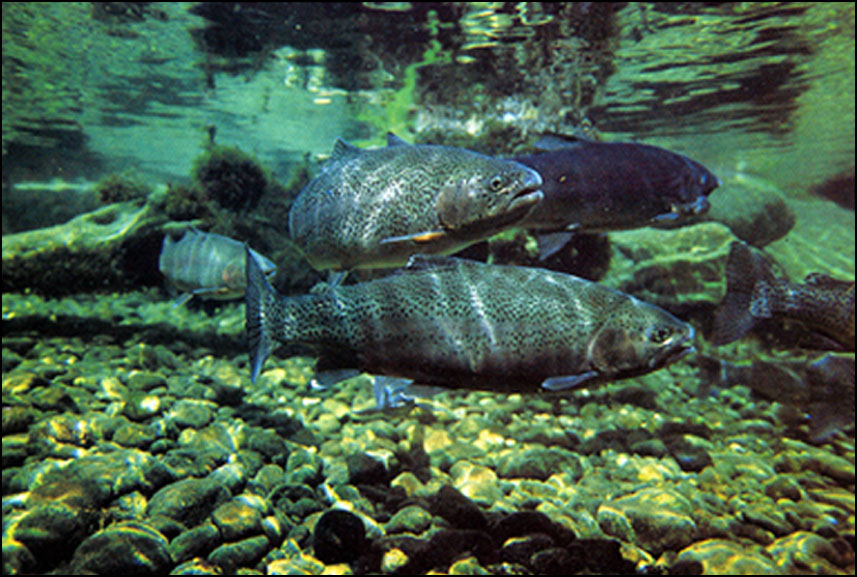
Trout of the West

|
BROOK TROUT - Aptly named, as these natives of Eastern North America thrive in impossibly tiny streams - including many Western rivulets where they have grown in great numbers but little in size, rarely exceeding 8 inches. In larger waters, brookies (Salvelinus fontinalis) can reach up to 10 pounds. Mature, spawning fish are vividly colored crimson and green, and favor flies of similar description. Flashy, dynamic fish, brook trout are much beloved by anglers. BROWN TROUT - Native to Northern Europe, browns are wary fish that adapt well to warmer, murkier water than other trout - meaning they thrive in plains and high desert streams and lakes where they can hide beneath undercut banks. Browns are more often golden than golden trout, and can reach great size - 30 pounds or more, in food-rich lakes. Anglers know Salmo Trutta love flies that mimic terrestrial goodies, such as grasshoppers and worms. CUTTHROAT - The original native trout of the inland West, cutthroat are so named for the bright crimson slash that appears below the gills on many fish. Scientist have identified more than a dozen distinct races of Oncorhynchus clarkii, many of which have little or no "cut throat." They thrive in fast, clear running waters and sparkling alpine lakes. Cutthroat inhabiting the latter are notoriously temperamental game fish; to catch them, anglers try subtle imitations of aquatic insects and shrimp. DOLLY VARDEN - Named after a Dickens character who favored colorful raiment, Dollies lurk deep in Pacific coastal streams and lakes. Actually char (as are brookies), Salvelinus malma tend toward greater length and less girth than brook trout. Difficult to extract from the deep holes they inhabit, Dollies lie low and stay low, thus attracting far less angling interest than the other trouts. GOLDEN TROUT - Native to the high Sierra of California, goldens are more rainbowed than they are gold; the latter quality is a brassy wash of color along the mid-body band that is often quite red. Rarely reaching past 15 inches, goldens are even more habitat-selective than cutthroat, from which scientists figure they are descended. Look for goldens in granite country, where the water is cool. RAINBOW TROUT - The rainbow designation theoretically refers to the color band along the trout's body, which in some specimens includes red, gold and blue. But most rainbows are silvery; if there are rainbows about, it's from the spray the fish produce when hooked. Native to the Pacific Coast, rainbows have been transplanted world wide because of the adaptability and acrobatics when fighting on a line. ALTA MEADOW RANCH is home to Brookies, Cutthroat and Rainbow Trout - both in the West Fork and several ranch ponds.
Homepage | Cabins |
Activities | Contact Us | Location
|